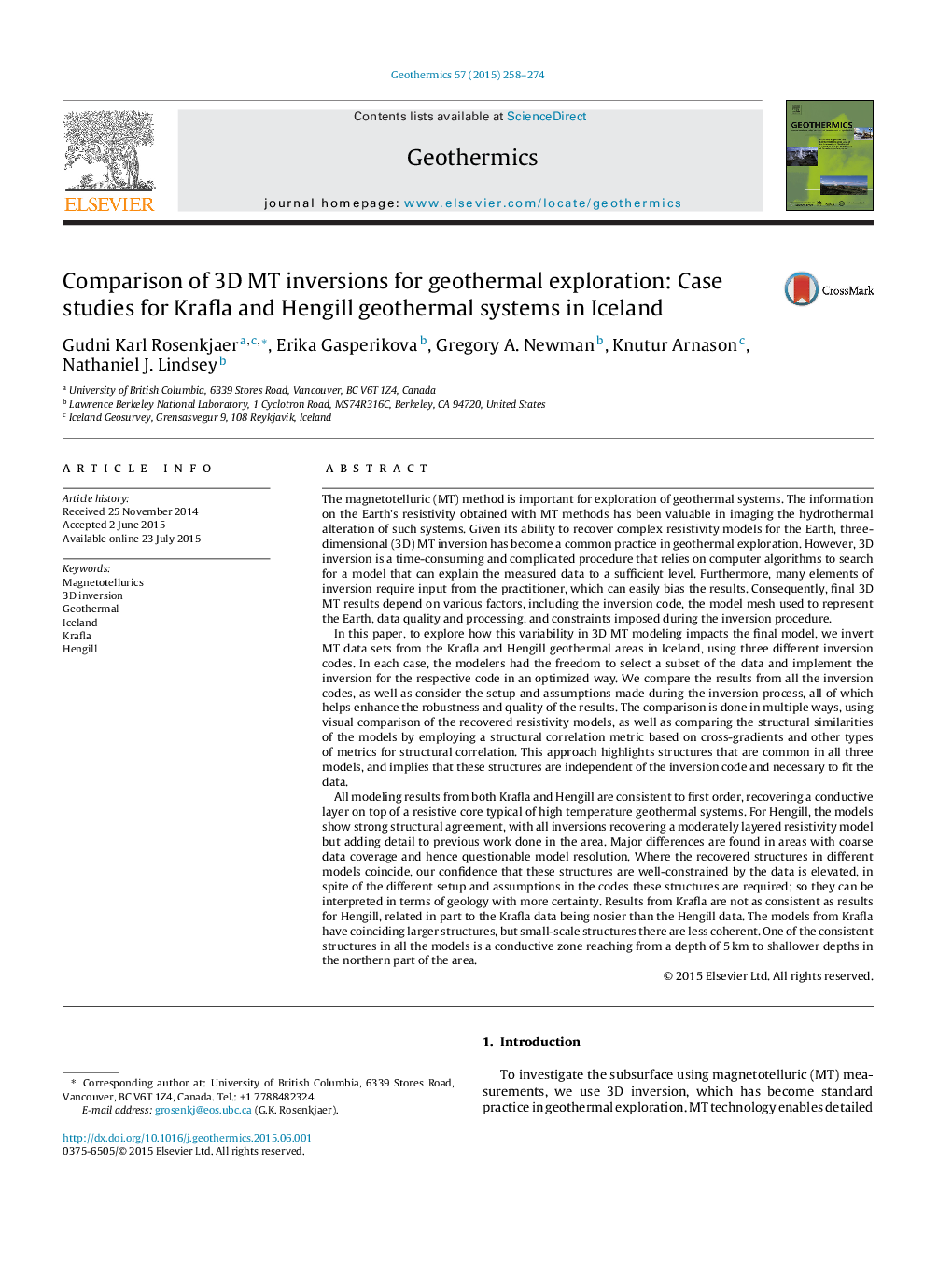| Article ID | Journal | Published Year | Pages | File Type |
|---|---|---|---|---|
| 1742242 | Geothermics | 2015 | 17 Pages |
Abstract
All modeling results from both Krafla and Hengill are consistent to first order, recovering a conductive layer on top of a resistive core typical of high temperature geothermal systems. For Hengill, the models show strong structural agreement, with all inversions recovering a moderately layered resistivity model but adding detail to previous work done in the area. Major differences are found in areas with coarse data coverage and hence questionable model resolution. Where the recovered structures in different models coincide, our confidence that these structures are well-constrained by the data is elevated, in spite of the different setup and assumptions in the codes these structures are required; so they can be interpreted in terms of geology with more certainty. Results from Krafla are not as consistent as results for Hengill, related in part to the Krafla data being nosier than the Hengill data. The models from Krafla have coinciding larger structures, but small-scale structures there are less coherent. One of the consistent structures in all the models is a conductive zone reaching from a depth of 5Â km to shallower depths in the northern part of the area.
Related Topics
Physical Sciences and Engineering
Earth and Planetary Sciences
Geochemistry and Petrology
Authors
Gudni Karl Rosenkjaer, Erika Gasperikova, Gregory A. Newman, Knutur Arnason, Nathaniel J. Lindsey,
